Rooftop PV continues to reduce operational demand and slash the emissions intensity on the National Electricity Market – Australia’s main grid covering the eastern and southeastern states. According to the Australian Energy Market Operator (AEMO), solar’s contribution was particularly pronounced in the latest quarter.
According to AEMO’s Quarterly Energy Dynamics report, the National Electricity Market (NEM) average operational demand was 362 MW lower than in Q2 2018, with demand reductions across all regions. As for the factors behind the trend, AEMO points to increased rooftop PV conditions, as well as mild weather in Sydney and Melbourne.
The largest reductions were in New South Wales (-130 MW) and Victoria (-111 MW), driven by additional rooftop PV output and mild peak-time temperatures which reduced heating requirements, the report states. Reduced demand in Queensland (-75 MW) and South Australia (-22 MW) was a function of continued growth in rooftop PV output over the middle of the day.
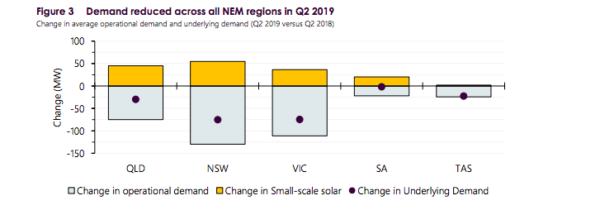
Meanwhile, South Australia set a new Q2 minimum demand record at 1:30 p.m. on April 27, when operational demand dropped to 749 MW. At this time, rooftop PV contributed approximately 600 MW of output. The state also surpassed its Q2 maximum demand record at 6:30 p.m. on June 24, when operational demand reached 2,564 MW, as a result of increased heating requirements.
With around 1 GW of small-scale solar PV on the South Australian grid at the end of June, the time of minimum demand has shifted from the early morning to the middle of the day (Figure 5). AEMO notes that this shift is limited to South Australia at present, while for other NEM regions, the overnight period remains the lowest demand part of the day.
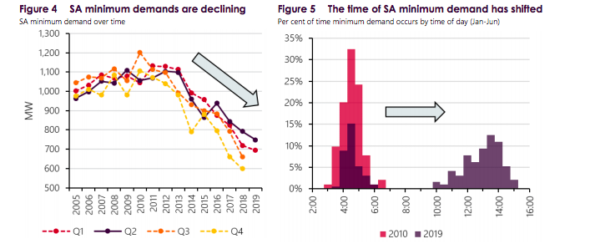
Shifts in the supply mix
As vast amounts of both rooftop and large-scale solar PV come online, the NEM energy supply mix is undergoing a major transformation. According to AEMO, average large-scale wind and solar generation on the NEW increased by 47% from 1,551 MW to 2,275 MW, making up 10% of the supply mix compared to 7% in Q2 2018.
Over the quarter, new projects representing almost 1,500 MW of capacity began generating. Of this new capacity, 427 MW was from solar. Large-scale solar generation increased by 281% to 318 MW as additional capacity was brought online. Most of the increase in large-scale solar output was in Queensland (195 MW, 61% of the increase). Average Q2 2019 rooftop PV generation increased by 19% from 669 MW to 827 MW compared to Q2 2018.

In addition to new utility-scale solar and wind capacity on the grid, shifts in the supply mix were also induced by a combination of brown coal generator outages at Victoria’s Loy Yang A and Loy Yang B and dry conditions which led to high decrease in hydro generation. Meanwhile, black coal experienced daytime displacement by solar generation (Figure 7).
In Q2 2019, average brown coal-fired generation was 573 MW lower than in Q2 2018 due to an increase in planned and unplanned outages, according to the report. “This culminated in the average availability factor for the current brown coal fleet in 2018-19 being at its second lowest level on record, with generation for the financial year at its lowest point since repeal of the carbon price,” AEMO states.
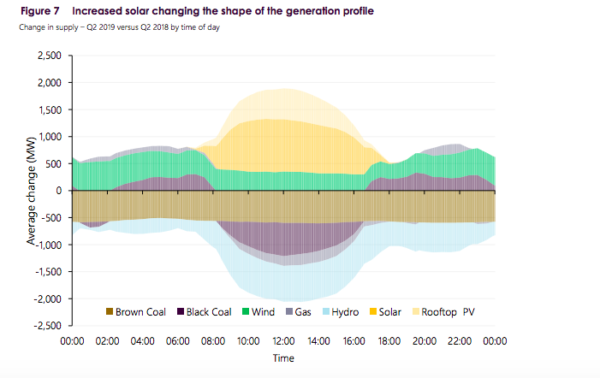
As a result of low brown coal-fired generation, increased renewable energy output, and lower demand, NEM emissions for the quarter fell to the lowest on record, AEMO reports. The largest decrease occurred at midday due to increased penetration of solar PV.
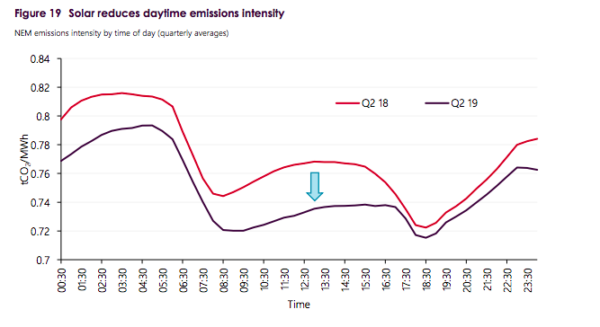
AEMO prepares for summer
With an eye on heightened risk of power failure during peak-demand periods due to reduced reliability of ageing fossil fuel generators, AEMO has announced it will expand its Reliability and Emergency Reserve Trader (RERT) provisions for the upcoming summer. Under the RERT mechanism, the market operator is able to maintain power system reliability and system security using reserve contracts.
With the generation or demand response outside the wholesale electricity market, participants may be contracted by AEMO to either use less energy or generate power from their own generators. Aggregators may also be contracted to procure demand response from electricity users.
During last year’s scorching heatwave, AEMO sourced up to 930 MW of additional reserves under the RERT mechanism to avoid a blackout scenario. However, as unreliable ageing coal clunkers tripped, the reserves were not enough and AEMO had no other option left but to order load shedding.
This year, AEMO is seeking expressions of interest from entities in Queensland, New South Wales, the Australian Capital Territory, Victoria, South Australia and Tasmania to join the RERT panel. Suitable reserves are generation assets (such as standby diesels) or load reduction in excess of that normally available to the NEM.
This content is protected by copyright and may not be reused. If you want to cooperate with us and would like to reuse some of our content, please contact: editors@pv-magazine.com.
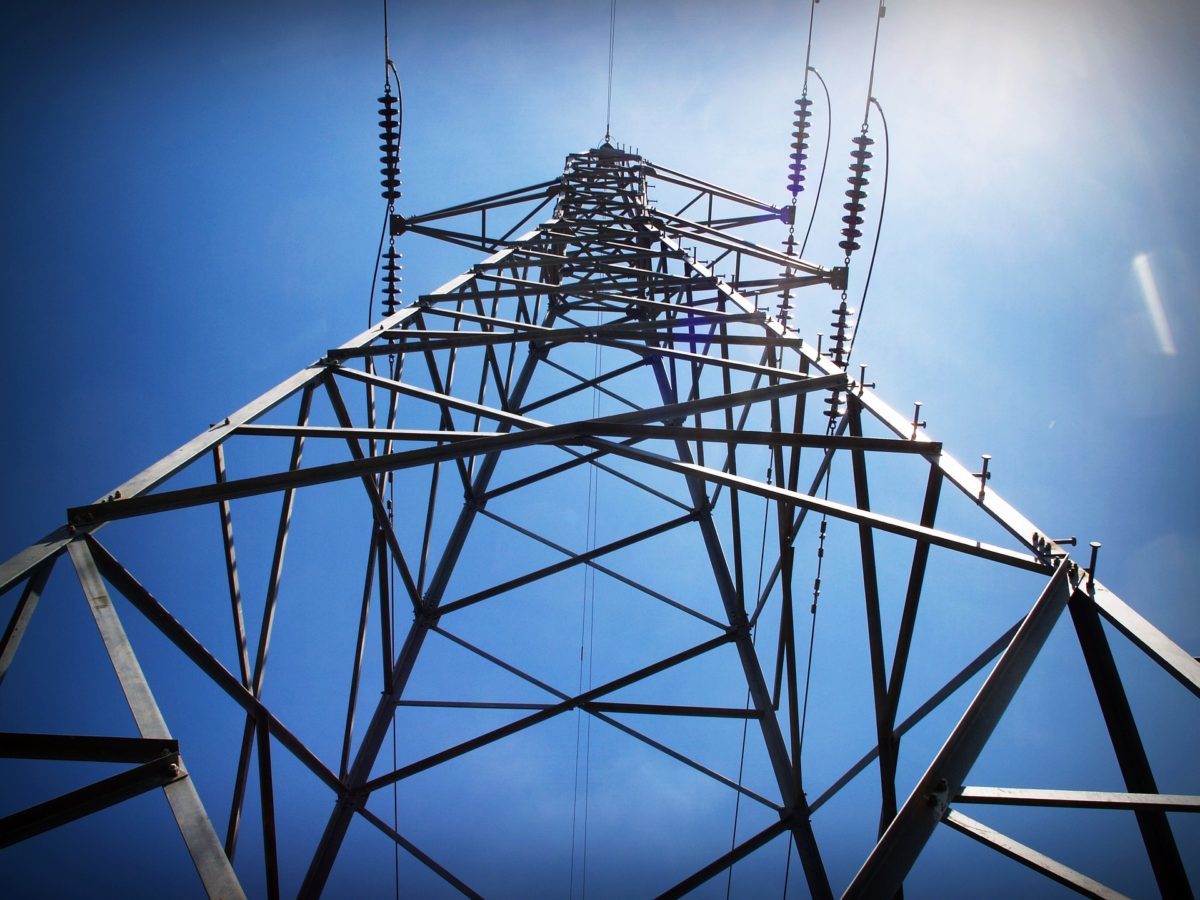
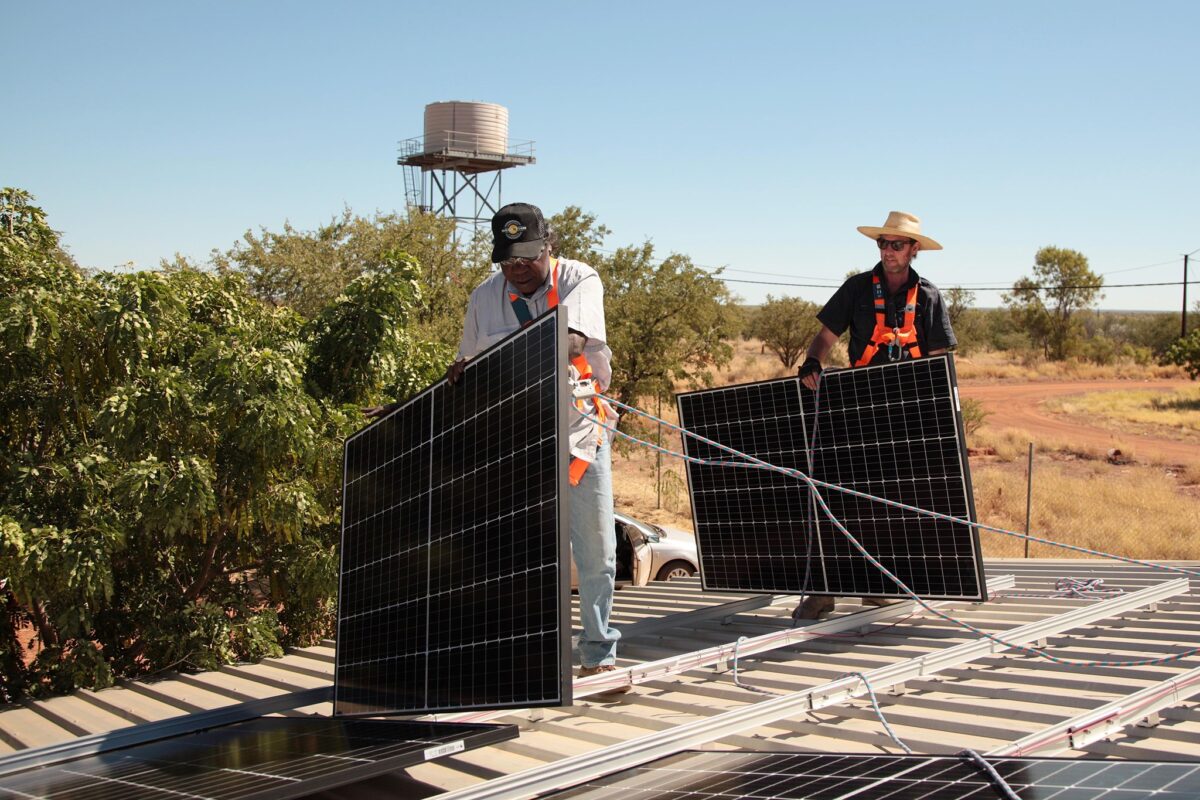


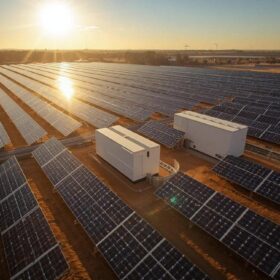
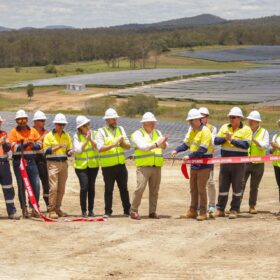
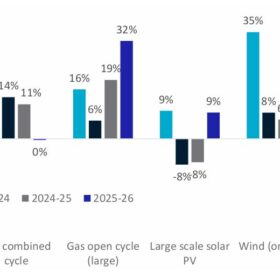

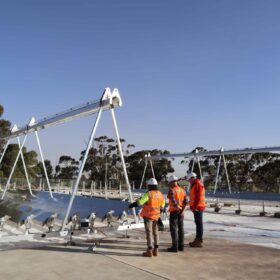
Wow, 1GW of installed solar PV, “With around 1 GW of small-scale solar PV on the South Australian grid at the end of June, the time of minimum demand has shifted from the early morning to the middle of the day (Figure 5). AEMO notes that this shift is limited to South Australia at present, while for other NEM regions, the overnight period remains the lowest demand part of the day.”
This would be a great place for a combined smart energy storage system. Program the system charger to use more solar PV for storage than generation during the day and shift this power to the night time hours. Pick up grid off peak electricity for charging the energy storage for use later in the night or early morning hours. Self generation and maximum self consumption would be the goal.